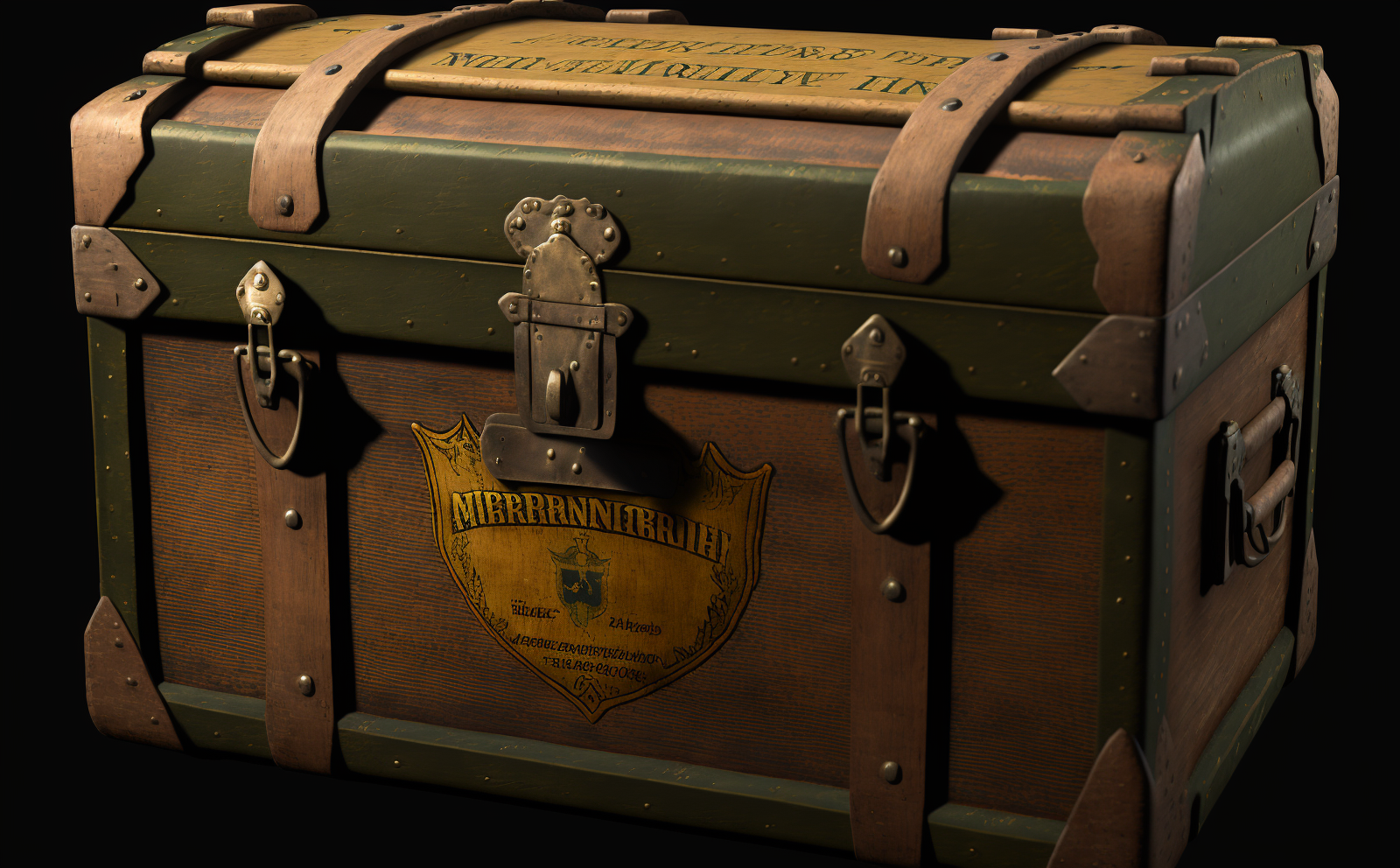A Wwii Circa 1941 Military Commission Richard H Slider
A U.S. military commission from 1941 is more than a ceremonial certificate—it is a legal instrument appointing an officer, anchored in wartime mobilization and signed on behalf of the President. When named to Richard H. Slider, such a document intersects personal history with national events. For collectors and appraisers, understanding the anatomy, context, and condition of a commission translates directly into confident authentication, better conservation decisions, and credible valuation.
Below is a focused guide to identifying and evaluating a circa-1941 commission naming Richard H. Slider, with attention to U.S. Army formats of the period.
What a 1941 U.S. Military Commission Represents
- Purpose: A commission confers officer status and authority. In 1941, as the U.S. expanded its forces, commissions were issued for Regular Army (RA), National Guard (NG), Officers’ Reserve Corps (ORC), and the wartime “Army of the United States” (AUS).
- Timing: “Circa 1941” places the document at the onset of U.S. wartime mobilization, when the War Department (predecessor to the Department of the Army) standardized many forms and formats while maintaining formal, engraved or printed commission certificates.
- Branch specificity: The format discussed here aligns most closely with U.S. Army commissions. Navy and Marine Corps commissions of the same era differ in layout and wording and cite the Navy Department rather than the War Department.
- Legal language: Expect ceremonial but precise phrasing: “reposing special trust and confidence,” “appoints,” “to rank as such from,” and directives to obey orders. The language is consistent and aids authentication.
If your commission is named to Richard H. Slider, the naming line typically appears prominently within the body text, often rendered in a distinguished hand or printing style to reflect the recipient’s identity and rank.
Anatomy of a Circa-1941 Army Commission
While variations exist between printers and lots, most 1940–1942 Army commissions share recognizable design cues:
- Paper and size: Heavy wove paper or vellum-like stock, commonly in a large format—often around 15 x 19 inches (approximate; ranges vary). The heft and stiffness are part of the presence of the piece.
- Printing methods: Intaglio or steel-plate engraving for headings, seals, and flourishes, with portions filled by hand in ink. Some late-1941 to wartime examples show neat pen calligraphy for the name (e.g., “Richard H. Slider”), rank, component, and date; occasional typewritten insertions appear in certain batches or reissues.
- Seal: A large, embossed, blue paper wafer seal bearing the Great Seal of the United States is commonly affixed, often with a red-white-blue silk ribbon threaded through slits in the paper. The seal’s crisp embossing and the wafer’s depth are useful authenticity markers.
- Headings and formulas: Expect “The President of the United States of America” at top, “To all who shall see these presents, greeting,” and the trust-and-confidence formula. “Army of the United States” appears on AUS commissions; “Regular Army” appears on RA commissions; “Officers’ Reserve Corps” or “National Guard” are noted where applicable.
- Rank and branch: The commission will state the exact grade (e.g., Second Lieutenant, First Lieutenant, Captain) and may indicate branch (Infantry, Artillery, Signal, etc.). The rank is paired with a date from which the officer “will rank.”
- Signatures:
- President: Franklin D. Roosevelt is cited in 1941. On most commissions, the President’s signature is not hand-signed but executed by authorized means (printed/secretarial). The text reads “By the President,” followed by the Secretary of War’s signature.
- Secretary of War: Henry L. Stimson (1940–1945) typically appears with an actual pen signature or a high-quality secretarial hand.
- Adjutant General: In 1941, the Adjutant General was Major General Emory S. Adams (until 1942). His countersignature is common on Army commissions and is a strong dating clue.
- Serial identifiers: Officer Service Number (e.g., “O-xxxxxx”) may be recorded on the document or accompanying orders; not all commissions carry it on the face. Accompanying orders, oath forms, or envelope mailers add valuable context.
A commission naming Richard H. Slider should show the name clearly within the body text. Compare the letterforms of the name to those of rank and date entries; consistency in ink and hand is typical, though not universal.
Authenticating and Dating the Document
A credible appraisal begins with a structured inspection. Use magnification and controlled light; avoid invasive tests unless performed by a paper conservator.
- Paper and watermark:
- Hold to light to look for a papermaker’s watermark—common in quality stock. Absence doesn’t prove inauthenticity, but a period watermark is supportive.
- Expect even fiber distribution without fluorescent optical brighteners (common post-1950s). Under UV, period paper tends to remain relatively dull.
- Printing and engraving:
- Under a loupe, engraved lines show burr and plate impression; letterpress leaves slight bite. Laser or inkjet dot patterns are anachronistic.
- Plate wear: Fine engraved lines should be sharp; excessive blurring suggests a photographic reproduction.
- Seal and ribbon:
- The wafer seal should be deeply embossed with a slightly glossy, hardened surface. The tricolor silk ribbon displays woven edges and period dye tones; modern polyester ribbon feels slick and overly bright.
- Inks and signatures:
- Secretary of War and Adjutant General signatures often show pen pressure, ink pooling at starts/stops, and slight fiber feathering—signs of authentic pen work.
- The President’s name is typically not a hand-signature on 1941 Army commissions; beware of claims that FDR personally signed ordinary officer commissions of this period.
- Language and titles:
- Expect “By the President: Henry L. Stimson, Secretary of War” in 1941.
- Adjutant General signature “Emory S. Adams” aligns with pre-mid-1942 dating; “James A. Ulio” indicates later wartime.
- Physical aging:
- Natural toning, gentle foxing, and fold memory are consistent. Uniformly white paper or inkjet sheen indicates modern reproduction.
Dating nuance:
- If the commission states “Army of the United States,” it situates the piece within the wartime AUS framework. “Regular Army” suggests career appointment. The exact rank date, Secretary/Adjutant signatures, and wording triangulate the year to 1941 with confidence.
Researching Richard H. Slider and Service Context
Beyond the document’s materiality, provenance elevates value. For a commission named to Richard H. Slider:
- Start with the text: Note the exact full name, middle initial, rank, component (AUS vs RA vs ORC/NG), branch, and the “to rank from” date. Transcribe carefully.
- Look for collateral papers: Oath of Office, acceptance letters, promotion orders, unit orders, or mailing tubes/envelopes. These often accompany commissions in estate holdings and confirm issuance.
- Officer Service Number: If present, it’s a powerful cross-reference. If absent, cross-validate with rank date and branch.
- Build a service arc:
- Identify likely training installations (e.g., OCS/branch schools) based on branch and date.
- Trace wartime promotions; a 1941 Second Lieutenant could see promotions through 1943–1945 depending on theater and branch.
- Family provenance:
- Interview relatives for photographs, uniforms, insignia, or diaries linking directly to Richard H. Slider. A named group brings coherence and value.
- Documentary sources:
- Muster rolls, unit histories, morning reports, and officer registers can corroborate identity, rank dates, and assignments. Copies or notes from these, kept with the commission, support appraisal credibility.
- Ethical considerations:
- Respect privacy and legal constraints when handling personal data.
- Keep notes of your research steps; a provenance summary document adds real appraisal weight.
The better you can link the commission to verifiable service milestones for Richard H. Slider, the more compelling your appraisal narrative—and the stronger the market response if selling.
Condition, Conservation, and Ethical Display
Condition drives value, especially for paper ephemera of this caliber. Common condition points and best practices:
- Typical issues:
- Central horizontal and vertical folds from original mailing/storage.
- Toning, edge nicks, corner creases, and occasional moisture staining.
- Seal/ribbon loss or partial detachment.
- Ink offset or abrasion at signature areas.
- Stabilization:
- Surface clean gently with a soft brush; avoid erasers on printed or signed areas.
- Humidification for flattening should be done in a controlled chamber by a paper conservator. Do not iron.
- Repairs:
- Use conservation-grade Japanese tissue and wheat starch paste for tear mends; avoid pressure-sensitive tapes.
- If the wafer seal is lifting, consult a conservator; improper reattachment can cause permanent damage.
- Storage:
- Store flat in acid-free, lignin-free folders or encapsulated in inert polyester sleeves (not laminated). Include a buffered backing board if compatible with media.
- Maintain stable environment: 30–50% RH, ~65–70°F, minimal light exposure.
- Display:
- Use UV-filter glazing, 100% cotton rag mat, and reversible hinging. Avoid direct sunlight and high-UV artificial light.
- Frame size should allow the full document and ribbon to rest naturally without stress or flattening the seal excessively.
Ethical note: Avoid altering or “enhancing” inks or signatures. Cleaning should prioritize reversibility and documentation.
Valuation: Factors, Price Ranges, and Market Notes
Commission documents from World War II occupy an active segment of the militaria market. For a 1941 commission named to Richard H. Slider, value depends on:
- Rank and component:
- Entry ranks (2nd Lt./1st Lt.) are common; Captain and above are scarcer for 1941-dated pieces.
- AUS commissions are plentiful; Regular Army commissions can carry a modest premium.
- Signatures and dating:
- The presence of Henry L. Stimson and Emory S. Adams aligns cleanly to 1941 and supports desirability.
- Original, intact blue wafer seal with tricolor ribbon increases value.
- Condition:
- Strong, clean paper with crisp embossing and minimal fold breaks commands higher prices.
- Provenance and grouping:
- A named, research-backed group (commission plus photos, insignia, orders) is more valuable than a stand-alone certificate.
- Historical interest:
- Service in notable theaters or units, awards, or a documented narrative related to Richard H. Slider can elevate demand.
Market guidance (typical retail/auction ranges; adjust for your locale and current demand):
- Stand-alone WWII Army officer commission (common rank), complete seal/ribbon, average folds/toning: roughly $150–350.
- Clean, high-grade example with strong signatures, crisp seal, and research packet on Richard H. Slider: roughly $300–600.
- Commission within a substantial named grouping (medals, uniforms, photo archive, orders) tied to documented service: roughly $600–1,500+, depending on depth and significance.
Use comparable sales of similar 1941 commissions with like condition and signatures to refine estimates. For insurance, consider insuring at the upper end of documented market results for comparable material.
Practical Checklist
- Identify the component and rank date; transcribe the exact text, including “Richard H. Slider.”
- Confirm period-correct signatures: “By the President: Henry L. Stimson” and “Emory S. Adams, The Adjutant General” for 1941.
- Inspect the blue wafer seal and tricolor ribbon for originality and condition.
- Verify printing method (engraving/letterpress) under magnification; rule out modern reproduction.
- Assess condition: folds, tears, toning, foxing, moisture, and seal attachment.
- Gather collateral papers and family provenance; note any Officer Service Number.
- Store flat in archival housing; avoid tapes and lamination.
- Photograph front, back, seal detail, and signatures for records and appraisal.
- Compare with recent sales of 1940–42 Army commissions; adjust for condition and grouping.
- If needed, consult a paper conservator for humidification/repair before framing.
FAQ
Q: Did Franklin D. Roosevelt personally sign 1941 Army officer commissions? A: Ordinary Army officer commissions of this period typically do not carry FDR’s hand signature. They are executed “By the President,” with the Secretary of War (Henry L. Stimson) signing and the Adjutant General countersigning.
Q: The ribbon or seal is missing—does that ruin the value? A: It reduces desirability, but does not eliminate value. A complete, original seal/ribbon usually adds a noticeable premium. Accurate research on Richard H. Slider and strong overall condition can offset a missing ribbon.
Q: How can I safely flatten heavy fold lines? A: Do not iron. Professional humidification and flattening by a paper conservator is the safest approach. Improper moisture or heat can cause cockling, ink migration, or seal failure.
Q: Is framing safe, or should I keep it in a folder? A: Both can be safe if done correctly. For display, use UV-filter glazing, acid-free mats, and reversible hinges. For long-term storage, an archival folder or polyester encapsulation in a dark, stable environment is best.
Q: What’s the difference between “Regular Army” and “Army of the United States” on a commission? A: “Regular Army” denotes the permanent peacetime establishment. “Army of the United States” was the wartime service component used for rapid expansion. The component affects historical context and, modestly, value.
With careful inspection, grounded research, and conservative stewardship, a WWII circa-1941 commission naming Richard H. Slider can be authenticated, preserved, and appraised with confidence—honoring both the individual officer and the broader history the document represents.




